We had been warned. In Addis one friend of our couchsurfing host told us that the Ethiopian Orthodox Church was “all about images and candles”. This guy had lived in the US for more than ten years, was enthusiastic about Jesus and disappointed about the religious practice in Ethiopia. I was soon to follow him in the latter point and Steffen in both.
It is little known abroad but Ethiopia hosts one of the oldest Christian churches – the Ethiopian Orthodox Church – related to but not to be confused with neither Egypt’s Coptic Church nor with any of the Greek, Russian or Armenian Orthodox Church (everyone who thinks of Brian’s “Judean People’s Front” now: we do so, too). Ethiopian Orthodoxism is much closer related to Ancient Judaism than any other church and most present-day Jewish faiths. It has been unaffected of most developments in Rome and Constantinople, not to speak of the reforms and reformation later on. They claim to host the “Ark of Covenant”, a replica of which can be found in the center of every Orthodox church. They hold both the Jewish Sabbath and the Christian Sunday, priests are allowed to marry, practise exorcisms and circumcision, they have menstruation taboos and are monophysite, some pretty complicated thing explaining the relationship between Jesus’ human and divine nature. Believers see the priests as the guards of the holy symbols, they kiss their magic hands and drink holy water against diseases (see here for other similar strange ways of believing).
Also their church buildings are quite distinct from others and the most famous ones we intended to visit: The rock-hewn churches of Lalibela. The architecture of these constructions is unique, and what is especially charming, they are not just relics from a long passed epoch but are still used today and form the center of the religious life in the whole region. We had read in the travel guide that in Ethiopia, God does not like foreigners and thus demands an entrance fee of 21 USD to see His House. We had accepted that because the churches are highly recommended. However, in the last couple of month they had increased the price to no less than 50 USD – the price of the Taj Mahal, the Great Wall of China and the Pyramids of Gizeh together! We were reluctant to enter, but after a while were inclined to buy a ticket and to give our curiosity higher priority than our disgust about Ethiopia’s government corruption. Yet we then heard that actually it were the priests themselves who pushed for higher entrance fees and that next year they want to inflate the price to 100 USD. We were not in the position to conduct a new “Temple Cleansing” and at least refused to pay these amounts. The architecture surely is interesting, but the currently present religious life had lost all of its appeal to us.
Actually, in the village this is quite a problem. Inhabitants and the government have heavily invested in tourism and are not amused about the priests’ policy. Nonetheless, they describe the “manager priest” as an aggressive and unpopular man and are angry about him. According to the owner of our guest-house, they have the damage, given that the tourist numbers are already declining. Past generations of priests knew how to build a communal life, today’s ones are more specialized in tearing it down.
Though, there was no reason to regret our decision to come to Lalibela region. The landscape here is simply awe-inspiring and very unique. We had two wonderful treks there, one to another church (entrance fee 20 USD ….) and one to “Ashketon Maryam” monastery, which – surprise – was affordable to enter. Probably, on the way up we had only overtaken the carrier of the new entrance sign with the higher price. The rock-hewn church was a bit rougher than the ones in Lalibela and had a nice, quiet, but slightly dark atmosphere. And in the end we had seen one of them.
It is unavoidable on these hikes to be accompanied by some local young men. They switch roles rather often on the trip, from friend to guide to shoe-cleaner to beggar to tout. Anyway, they will demand money. We told them from the start that they were welcome to join us and talk with us, but that we would not give them anything. They still joined us and we had some nice conversation. Often they asked for sponsoring for their education and hoped that we could give them the necessary connection to get some funding. They were honestly surprised when we told it was they who had to become active. It was new for them that such an application needed a long preparation and carefully chosen convincing arguments. At the end of our trek, they were quite disappointed that we stuck to our word and did not give them money. Yet they did not turn angry, which clearly distinguishes them from Indians. In general, it is agreeable that in Ethiopia they also stay friendly after you rejected an offer, may it be from a tout, a vendor or a beggar. It is important for them not to loose their face.
The next day, during our journey to Gondar, we observed a quite similar attitude towards money. The bus boy demanded some extra money for the luggage and of course the price was too high. While trying to persuade us, he put forward a very strong reason: In Europe, he said, we had “free payments for nothing”, so it would not hurt us to give a bit more to him who was so in need. We made it CLEAR that in Europe it is an old tradition to work for your money and that you do not earn anything without a job. He was baffled by these news. This attitude seems strange but it is understandable to some degree. In Ethiopia, corruption is even more widespread than in India and jobs are not given according to qualification but rather to connections to government. Hence, for most Ethiopians probably it seems incredible to become rich just by working. And as long as they do not change their mind, perhaps they are right. Moreover, it seems really worth it hanging around and wait for a tourist to give them a dollar for anything. And as long as the tourists do not change their attitude, the locals are right again.
But we also had a great experience on this journey. Unfortunately, in a small, really African village in the middle of nowhere, all passing buses were full and did not even stop. We were lucky that a truck came along the road and agreed (against a payment of course, it is not South-America) to take us with him the major part of the way. It was a first time we drove by truck, the landscape was good entertainment, we had plenty of space and even stopped for photo breaks. The driver was very capable and a cool guy, he managed to never kill neither a cow nor a goat, had an impressive intuition in anticipating that no one would come from the other direction while overtaking in a curve and wisely chewed khat-leaves all the time in order not to fall asleep. Travelling in Africa seems to be a bit cumbersome and adventurous, but with pragmatic solutions it is a lot of fun.
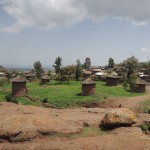
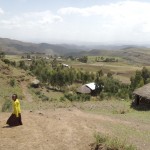
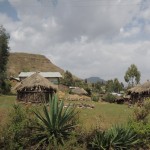
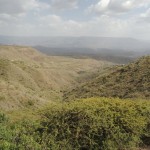
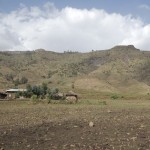
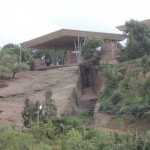
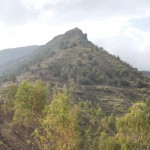
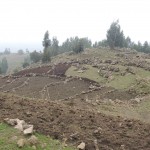
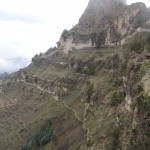
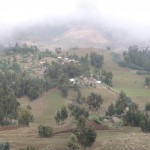
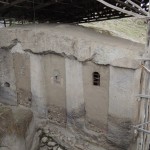
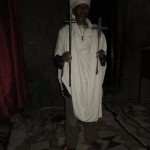
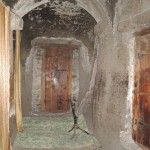
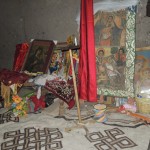
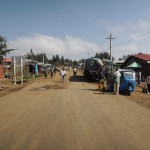
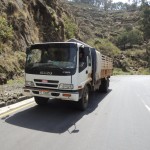
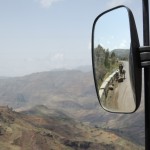
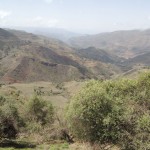
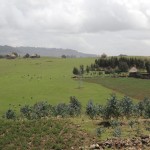
Pas mal l’idée de faire un peu le ménage dans le temple. Je suis d’accord ! Si au moins ils pouvaient construire un orgue avec tous ces sous…
Mais ce que j’apprécie le plus, c’est de voir un Francais dire qu’en Europe on travaille pour de l’argent. Je croyais que c’était la grève qu’il fallait faire
l’Afrique ça colle à la peau